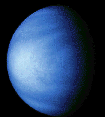This is an image of Venus.
Click on image for full size
NASA
The Cooling of Venus
The following may be the history of Venus.
- at the conclusion of forming it continued to be hit with leftover material.
- Venus warmed from inside, and separated into layers. Because Venus is close to the sun, the atmosphere formed differently than did the Earth's, as sugggested by the Goldilocks idea.
- After that, Venus started cooling down. The crust began to thicken, just like jello hardens when it is being made. The hardening crust prevented continental drift. This also prevented the recycling of the atmosphere.
- Despite the thick crust, volcanic activity may continue to this day as Venus continues to cool.
You might also be interested in:

How did life evolve on Earth? The answer to this question can help us understand our past and prepare for our future. Although evolution provides credible and reliable answers, polls show that many people turn away from science, seeking other explanations with which they are more comfortable.
...more
The terrestrial planets formed in two ways, either: very warm, separated into layers, with lots of water on the surface, with volcanic activity, as well as continental drift. cold and rocky, needing to
...more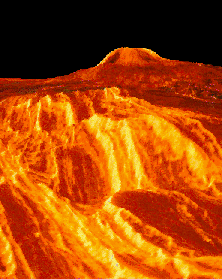
Unlike the Earth's crust, the crust of Venus is very rigid. The shape of the volcanoes suggests that over its history, Venus, like Mars, has built a thick crust. A thick crust prevents motions of a surface.
...more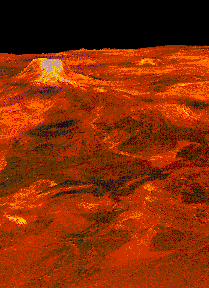
The Magellan mission to Venus confirmed that the surface of Venus is definitely volcanic. As shown in this picture, lava flows extend to hundreds of miles across the plains in the foreground. The surface
...more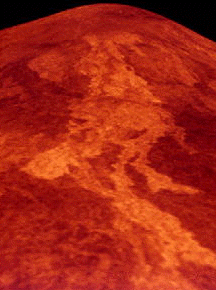
The Earth-planets formed with the gathering of rocky material and volatiles out of the primitive solar nebula. As they finished forming, the surface continued to be hit by the remnant of planetary material
...more
Alpha Regio is the home of Eve Mons, a volcano.
...more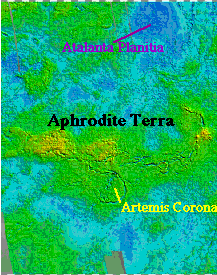
Aphrodite Terra, the Greek name for the goddess Venus, is about the size of half the continent of Africa, and is to be found along Venus' equator. Aphrodite Terra is different from Ishtar Terra in that,
...more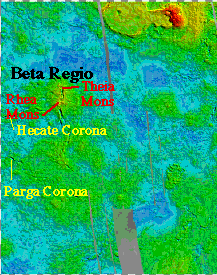
Beta Regio is an example of a volcanic rise, and is more like an island than a continent. Volcanic rises such as Beta Regio sometimes contain deep troughs. The troughs may be evidence of a surface inmotion.
...more


